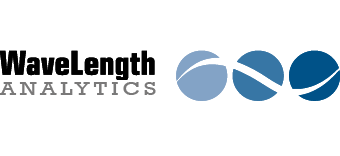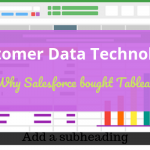
Marketing Reporting Technology through Company Growth: Small Business Edition
Time to Read: 2.5 minutes
If you think your start-up is too small to make use of marketing reporting technology, think again.
In the digital age, pretty much everyone is swimming in data. Gigantic corporation? Drowning in it. Flower shop down the street? Spritzed with a refreshing mist of data. Local mom with a network marketing gig?
Awash in…. well, you get the idea.
In a world where a clever Facebook post generates leads, each marketing tactic yields valuable data. Valuable data means marketing insights. But to unlock marketing insights you need marketing reporting technology. Or a dashboard tool.
No matter which growth stage your business happens to be in, the data is there. It’s ready to be translated into better strategies and razor-sharp efficiency. But not every small company needs an Ultra Giant Mega Complicated Reporting Platform™. Even with consideration to growth trajectories.
Three Rules for Choosing a Marketing Reporting Technology
So the key to choosing the right marketing reporting technology is to consider the usual. For example, how many dashboards do you need to create? And for how many audiences? And how many data sources do you need to include? Then what are the update intervals? And finally, what’s the budget and how fast do you expect your company to grow? Make trade-offs based on time, money, and expected growth.
As you assess current marketing priorities, here are three easy rules:
- If you have more time and techy know-how than cash, check into freebies and open source platforms.
- Need data privacy? Look at a paid solution.
- If spend more than 20% of your revenues on marketing, opt for a platform that grows with you. Even if you overbuy now, you’ll be better off in the long run. After all, you won’t have to take the time to learn another tool.
Four Affordable Ways to Measure Marketing Success
There are many fantastic marketing reporting technology options for every budget. In fact, Capterra review site contains nearly 500 different dashboarding apps. So there’s obviously no humanly possible way to evaluate all vendors. With this in mind, we’ve narrowed the field to a few small business options that can grow as you grow.
Google Sheets
As everyone knows, Sheets is a free web-based platform for building spreadsheets and reports. As part of the Google suite, you can build your own dashboard for simple marketing reports. It is, hands down, the most accessible marketing reporting technology for tiny budgets. And it makes a lot of sense for those who are already familiar with the Google suite.
Google Data Studio
Ah. Google Data Studio. We’re in love.
So beautiful, And soooo much easier on the eyes than plain, ol’ Google Analytics. Of course, there are templates to get you started. But Google Data Studio gets useful because you create the dashboard that works for you.
Connectors grab data from the usual Google apps Google Analytics. A growing developer community offers social media data connectors. Some are free. Others like Supermetrics charge a monthly fee. All in all, even though there is a bit of a learning curve, we’re fans. It’s a great marketing reporting technology with a bright future.
Oh, and it’s free, too.
But, caution. Nothing is really free.
What you’re doing is giving all your organization’s marketing channel data to Google. And remember, they keep everything. Just make sure that before you connect the crown jewels to Google Data Studio, that you’re okay with Google having your marketing channel data. For Google AdWords, Search, and Analytics, they have that info anyway, so using Google Data Studio as the marketing reporting technology does not matter. However, think hard about whether you want them to have your LinkedIn ad, Facebook Ads and Twitter ads data.
ClicData
If you’ve got a little coin to spare every month, ClicData is another great marketing reporting technology to consider. It has a large library of connectors to all the usual marketing channels. Also, it connects to all major CRM and marketing automation apps.
And if you don’t find the connector you need, Zapier to the rescue to connect more than 750 data sources.
The ClicData dashboard is a simple, quick, and in-depth option for marketing reporting and visualization. Connectors you need drive the pricetag, so it’s a good option for small businesses. Even better, it’s a marketing reporting technology with some room to expand. As you grow and need more connectors, it’s stays both affordable and robust.
Tableau
Tableau makes it simple to connect various data sources – spreadsheets. Social media marketing channels. Cloud-based databases. You name it, Tableau connects with it.
Its drag-and-drop interface makes reporting and data visualization a piece of cake. Nonetheless, you have to keep in mind that it’s an enterprise-class dashboarding tool. Because it has so many features that range from simple to complex, there is a learning curve.
It has other benefits though. Recent packaging and pricing changes, now resembling Microsoft Power BI, allows organizations to affordably extend dashboard viewing to more in the organization.
Tableau also offers the full-range of hosting options for organization. It’s available on-prem, in the public cloud of your choice, as well as Tableau Online.]It’s your marketing data, so you can choose the solution that optimizes both budgets and security and privacy requirements. So if you have high data privacy requirements, have budget and time to invest learning Tableau’s ins-and-outs, it’s a great scalable option for the long haul.
Buy the Solution that Can Grow with Evolving Needs
In sum, picking a marketing reporting technology for smaller, growing businesses is a lot like choosing one for a large one. Learning new tools – and making it a part of operations- is a time commitment. During high growth, needs change fast. So it’s critical to choose a marketing reporting technology that can change with your changing needs.







